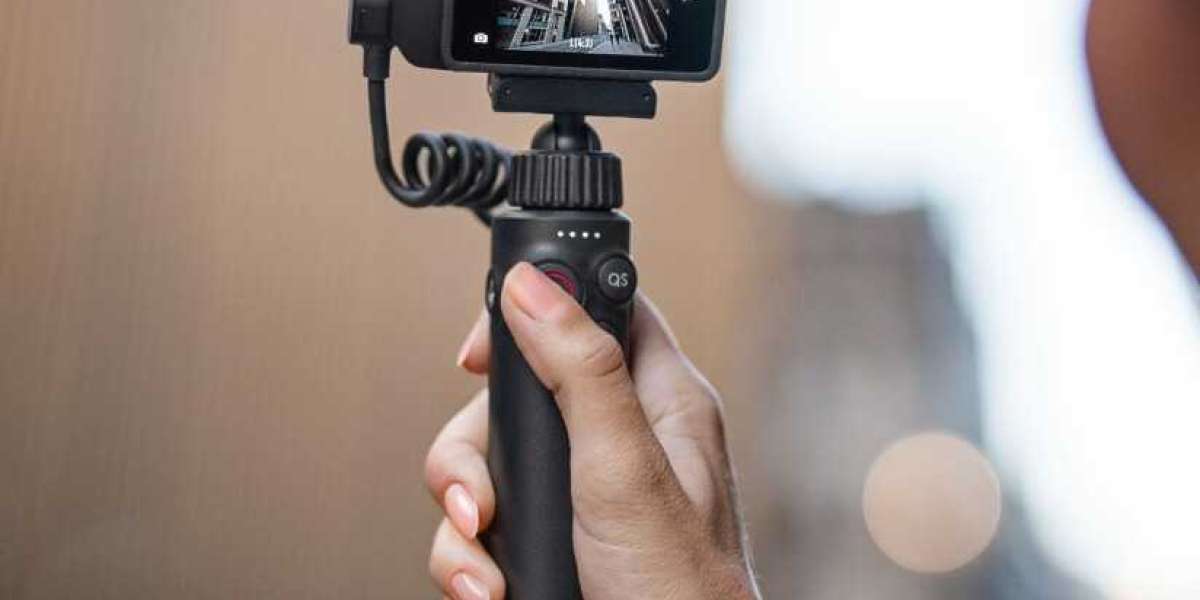If you’ve ever watched a video with shaky footage, you know how quickly it can pull viewers out of the moment. Whether you’re a vlogger, filmmaker, or hobbyist, a camera gimbal is your ticket to capturing smooth, professional-quality shots that keep your audience engaged. These compact, powerful tools stabilize your camera, letting you focus on storytelling without worrying about jitters. In this guide, we’ll break down what makes a gimbal essential, how to pick the right one, and tips to use it like a pro. Let’s dive into the world of gimbal cameras!
What Is a Camera Gimbal?
A gimbal is a motorized stabilization device that keeps your camera steady by counteracting unwanted movements. Using a three-axis system (pitch, yaw, and roll), it adjusts in real time to keep your shots level, even if you’re walking, running, or filming in challenging conditions. Unlike tripods, which are great for static shots, a camera gimbal gives you the freedom to move while maintaining silky-smooth footage, making it a must-have for dynamic videography.
Think of it as your personal steadicam operator. Whether you’re shooting with a DSLR, mirrorless camera, or even a smartphone, a gimbal camera setup ensures your videos look polished and professional, perfect for travel vlogs, action sequences, or cinematic storytelling.
Why You Should Invest in a Gimbal
A camera gimbal isn’t just a fancy gadget—it’s a game-changer for content creators. Here’s why it’s worth adding to your toolkit:
- Cinematic Quality: Gimbals eliminate shakes, delivering smooth, professional footage that rivals high-end productions.
- Versatility: From smartphones to heavy DSLRs, gimbals support a wide range of devices, making them accessible for all creators.
- Creative Control: Capture dynamic shots like tracking sequences, smooth pans, or low-angle perspectives without sacrificing stability.
- Portability: Modern gimbals are lightweight and foldable, ideal for on-the-go shooting, whether you’re traveling or covering an event.
With a gimbal, you can focus on your vision, knowing your footage will look clean and engaging.
How to Choose the Right Gimbal
With so many options out there, picking the perfect gimbal requires a bit of research. Here’s what to consider:
1. Camera Compatibility
Check the gimbal’s payload capacity to ensure it can handle your camera’s weight and size. For example, a gimbal like the DJI Ronin-S is built for heavier DSLRs, while the DJI Osmo Mobile 6 is designed for smartphones.
2. Battery Life
Long shoots demand reliable battery life. Look for gimbals offering 8–12 hours, like the Zhiyun Weebill-S, to keep up with your schedule.
3. Stabilization Modes
Gimbals come with modes like pan-follow, lock, or full-follow. These let you customize how the gimbal tracks your movements, adding versatility to your shots.
4. Portability
If you’re a travel vlogger, choose a compact, foldable model like the Moza AirCross 2. For studio work, a sturdier gimbal might be better.
5. Budget
Gimbals range from affordable options (around $100) to pro-grade models ($500+). Balance features with your budget to find the right fit.
Top Picks:
- DJI Ronin-SC: Lightweight and powerful, perfect for mirrorless cameras.
- Zhiyun Weebill-S: Compact and versatile, ideal for travel and small setups.
- DJI Osmo Mobile 6: A go-to for smartphone creators, with smart features like gesture control.
- FeiyuTech AK2000S: Budget-friendly yet robust for mid-sized cameras.
Tips for Using Your Gimbal Like a Pro
To maximize your camera gimbal, follow these practical tips:
- Balance First: Always balance your camera on the gimbal before turning it on. This ensures smooth operation and prevents motor strain.
- Move Smoothly: Walk with a slight knee bend to absorb shocks, and practice deliberate movements for fluid shots.
- Experiment with Modes: Try different stabilization modes to find what works best for your scene, like lock mode for static subjects or follow mode for dynamic shots.
- Add Accessories: Pair your gimbal with a tripod for stationary shots or a slider for multi-dimensional movement.
- Update Firmware: Check for firmware updates to unlock new features or improve performance, keeping your gimbal in top shape.
How Gimbals Elevate Your Content
A gimbal camera setup transforms your videos from amateur to professional. Imagine filming a travel vlog: your gimbal keeps your shots steady as you walk through a vibrant market, capturing every detail without a hint of shake. Or picture a wedding video, where a smooth tracking shot follows the couple down the aisle, drawing viewers into the moment. These polished visuals make your content more immersive and memorable.
Beyond technical benefits, gimbals unlock creative possibilities. You can experiment with unique angles, seamless transitions, or dynamic movements, all while maintaining flawless stability. This level of polish helps your videos stand out in a crowded digital space, whether you’re building a YouTube channel or creating branded content.
Final Thoughts
A camera gimbal is more than a tool—it’s a doorway to professional videography. By delivering smooth, cinematic footage, it lets you focus on telling stories that captivate your audience. Whether you’re shooting with a smartphone or a high-end camera, a quality gimbal like the DJI Osmo Mobile 6 or Ronin-SC can elevate your work to new heights. So, pick the right gimbal, practice your techniques, and start creating videos that leave a lasting impression!








